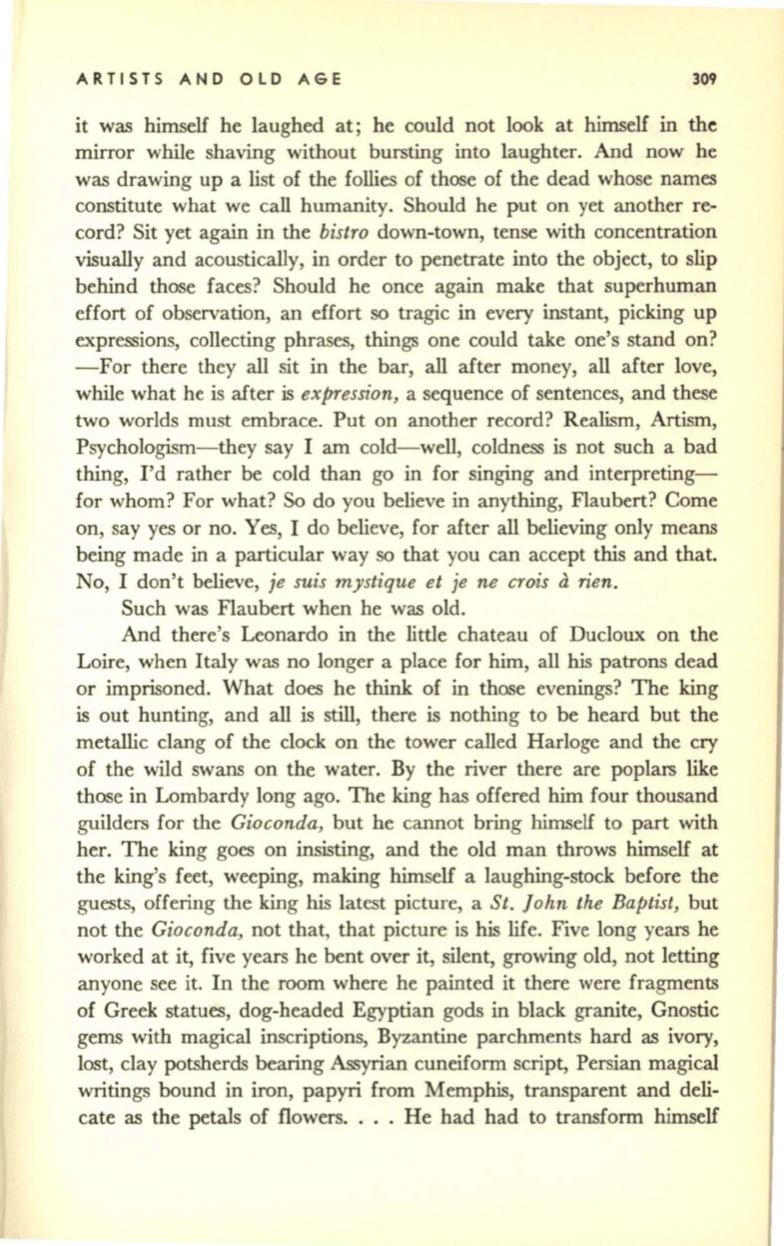
ARTISTS AND OLD AGE
309
it
was
himself he laughed at; he could not look at himself in the
mirror while shaving without bursting into laughter. And now he
was
drawing up a list of the follies of those of the dead whose names
constitute what we call humanity. Should he put on yet another re–
cord? Sit yet again in the
bistro
down-town, tense with concentration
visually and acoustically, in order to penetrate into the object, to slip
behind those faces? Should he once again make that superhuman
effort of observation, an effort so tragic in every instant, picking up
expressions, collecting phrases, things one could take one's stand on?
-For there they all sit in the bar, all after money, all after love,
while what he is after is
expression,
a sequence of sentences, and these
two worlds must embrace. Put on another record? Realism, Artism,
Psychologism-they say I am cold-well, coldness is not such a bad
thing, I'd rather be cold than go in for singing and interpreting–
for whom? For what? So do you believe in anything, Flaubert? Come
on, say yes or no. Yes, I do believe, for after all believing only means
being made in a particular way so that you can accept this and that.
No, I don't believe,
je suis mystique et je ne crois
a
rien.
Such was Flaubert when he
was
old.
And there's Leonardo in the little chateau of Ducloux on the
Loire, when Italy
was
no longer a place for him, all his patrons dead
or imprisoned. What does he think of in those evenings? The king
is out hunting, and all is still, there
is
nothing to be heard but the
metallic clang of the clock on the tower called Harloge and the cry
of the wild swans on the water. By the river there are poplars like
those in Lombardy long ago. The king has offered him four thousand
guilders for the
Gioconda,
but he cannot bring himself to part with
her. The king goes on insisting, and the old man throws himself at
the king's feet, weeping, making himself a laughing-stock before the
guests, offering the king his latest picture, a
St. John the Baptist,
but
not the
Gioconda,
not that, that picture is his life. Five long years he
worked at it, five years he bent over it, silent, growing old, not letting
anyone see it. In the room where he painted it there were fragments
of Greek statues, dog-headed Egyptian gods in black granite, Gnostic
gems with magical inscriptions, Byzantine parchments hard
as
ivory,
lost, clay potsherds bearing Assyrian cuneiform script, Persian magical
writings bound in iron, papyri from Memphis, transparent and deli–
cate
as
the petals of flowers. . . . He had had to transform himself


